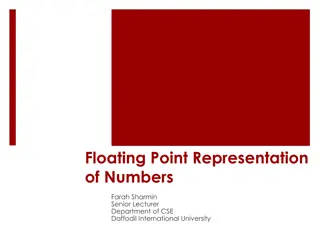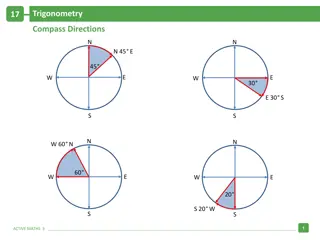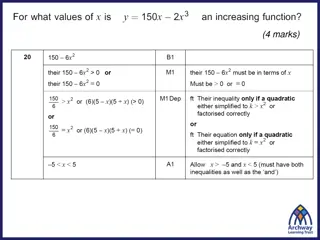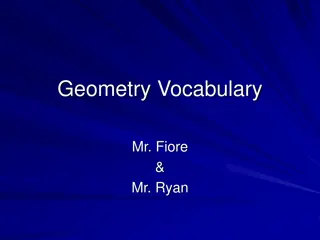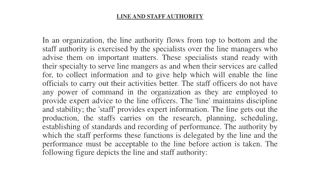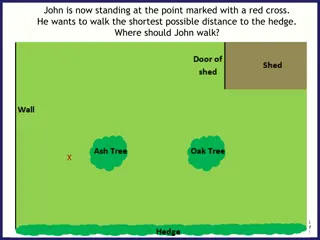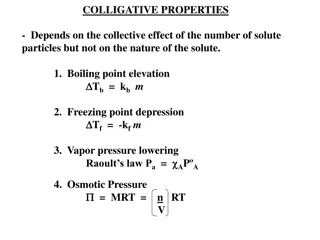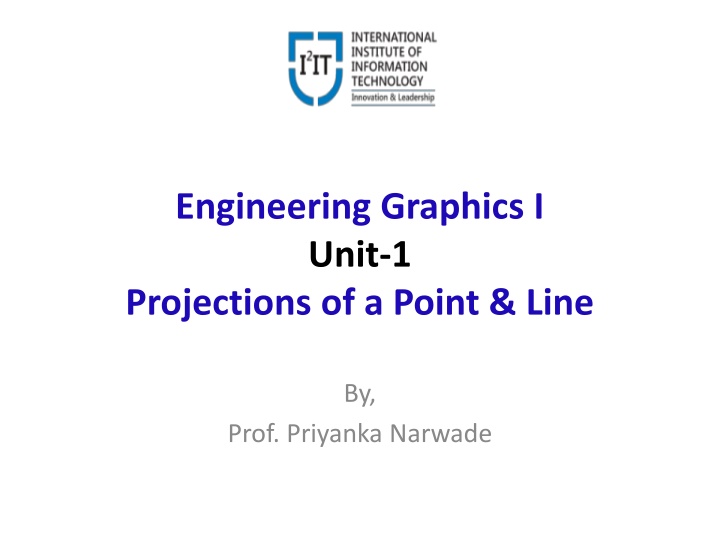
Projections of Points and Lines in Engineering Graphics
Explore the concepts of projections of points in various quadrants, theory of projections, and auxiliary plane methods in Engineering Graphics. Learn about principles planes, different cases of point analysis, and orthographic presentations. Dive into the theories of Auxiliary Vertical Plane (AVP) and Auxiliary Inclined Plane (AIP) for enhanced understanding.
Download Presentation

Please find below an Image/Link to download the presentation.
The content on the website is provided AS IS for your information and personal use only. It may not be sold, licensed, or shared on other websites without obtaining consent from the author. If you encounter any issues during the download, it is possible that the publisher has removed the file from their server.
You are allowed to download the files provided on this website for personal or commercial use, subject to the condition that they are used lawfully. All files are the property of their respective owners.
The content on the website is provided AS IS for your information and personal use only. It may not be sold, licensed, or shared on other websites without obtaining consent from the author.
E N D
Presentation Transcript
Engineering Graphics I Unit-1 Projections of a Point & Line By, Prof. Priyanka Narwade
Learning objectives: Projections of a Point To Study concept of Principle Planes To Understand theory of Projections Analysis of a point in various quadrants Analysis of a point in 1stquadrant, its different cases Theory of projections by auxiliary plane method: AVP & AIP 2
2 n d Q u a d r a n t VP 1ST Quad. 2nd Quad. 1 s t Q u a d r a n t F.V. F.V. Y Observer HP X Y X 3 r d Q u a d r a n t O b s e r v e r 4th Quad. 3rd Quad. 4 t h Q u a d r a n t 3
POINT A IN 1ST QUADRANT POINT A IN 2ND QUADRANT VP a VP A A a a HP OBSERVER HP OBSERVER a a HP HP OBSERVER OBSERVER a a A a A POINT A IN 4TH QUADRANT POINT A IN 3RD QUADRANT VP VP 4
PROJECTIONS OF A POINT IN FIRST QUADRANT. POINT A ABOVE HP & IN VP POINT A ABOVE HP & INFRONT OF VP POINT A IN HP & INFRONT OF VP For Tv For Tv For Tv PICTORIAL PRESENTATION PICTORIAL PRESENTATION A a a A Y Y Y a a a X X X A a ORTHOGRAPHIC PRESENTATIONS OF ALL ABOVE CASES. Fv above xy, Tv below xy. Fv above xy, Tv on xy. Fv on xy, Tv below xy. VP VP VP a a a X Y X Y X Y a a a HP HP HP 5
Theory of Projections by Auxiliary Plane Method Auxiliary Vertical Plane [AVP] AVP is always perpendicular to HP, inclined to VP and hinged to HP (X1Y1). AVP is used to find Auxiliary (New) FV which will lie on a line drawn from TV, perpendicular to New Reference Line (X1Y1), drawn at an angle of AVP to XY, and lies at a distance of its previous FV from its own XY. 6
Theory of Projections by Auxiliary Plane Method Auxiliary Inclined Plane [AIP] AIP is always perpendicular to VP, inclined to HP and hinged to VP (X1Y1). AIP is used to find Auxiliary (New) TV which will lie on a line drawn from FV, perpendicular to New Reference Line (X1Y1), drawn at an angle of AIP to XY, and lies at a distance of its previous TV from its own XY. 7
Learning objectives: Projections of a Line To study the Concept of Line To understand fundamentals of projections of a line Analysis of a line in 1st quadrant, different cases Traces of a line: HT & VT Summarization of concepts & observations of a oblique line 8
Projections of Line Line: The shortest distance between two points A locus of infinite number of points. A segment of an arc with infinite radius A one dimensional object True Length: Every line has only & only one True Length (TL). TL of a line in FV, TV, SV remains the same. Concept: If any line is parallel to any one reference plane, then view obtained in that reference plane is always True Length. When any one view of a line represents TL, then its correspondence view is always parallel to XY & is apparent length. For example: If FV is a TL, then its corresponding view is TV as Plan Length (PL). For example: If TV is a TL, then its corresponding view is FV as Elevation Length (EPL). 9
Orthographic Pattern For Tv (Pictorial Presentation) V.P. a Note: a Fv is a vertical line Showing True Length & Tv is a point. A Fv 1. FV b A Line b Y perpendicular to Hp & // to Vp X Y B a b TV Tv a b X H.P. Orthographic Pattern V.P. (Pictorial Presentation) Note: For Tv Fv & Tv both are // to xy & both show T. L. 2. Fv a b b A Line // to Hp & // to Vp B a X Y Y A b a b Tv X a H.P. 10
V.P. Fv inclined to xy Tv parallel to xy. b 3. b A Line inclined to Hp and parallel to Vp (Pictorial presentation) B a Y X Y a a b A T.V. b X a H.P. Orthographic Projections V.P. Tv inclined to xy Fv parallel to xy. 4. Fv a b b A Line inclined to Vp and parallel to Hp (Pictorial presentation) a B A X Y a Tv b a b H.P. 11
For Tv For Tv A Line inclined to both Hp and Vp (Pictorial presentation) 5. b b B B Y Y a a A A X a b X T.V. a b T.V. V.P. b FV a X Y a TV H.P. b 12
Note the procedure When True Length is known, How to locate FV & TV. (Component a b2 of TL is drawn which is further rotated to determine FV) Note the procedure When Fv & Tv known, How to find True Length. (Views are rotated to determine True Length & it s inclinations with Hp & Vp). Orthographic Projections Means Fv & Tv of Line AB are shown below, with their apparent Inclinations & V.P. V.P. V.P. b1 b b1 b b FV FV TL b2 a a a X Y X Y X Y b1 a b1 a a TV TV TV H.P. H.P. b H.P. b b b2 Here a b1 is component of TL ab1 gives length of FV. Hence it is brought Up to Locus of a and further rotated to get point b .a b will be Fv. Similarly drawing component of other TL(a b1 ) TV can be drawn. In this sketch, TV is rotated and made // to XY line. Hence it s corresponding FV a b1 Is showing True Length & True Inclination with Hp. Here TV (ab) is not // to XY line Hence it s corresponding FV a b is not showing True Length & True Inclination with Hp. 13
Traces of Line Trace: intersecting to reference plane. Extension of apparent line Horizontal Trace (HT): Extend EL to intersect XY at h , through h draw the projector which will cut extension of PL to give HT. Vertical Trace (VT): Extend PL to intersect XY at v , through v draw the projector which will cut extension of EL to give VT. Remember: EL (a ,b ), h, VT are collinear & lie on line. PL (a, b), v, HT are collinear & lie on line, while h & v are always lie on XY. 14
Traces of Line Line Parallel to HP & Perpendicular to VP Line Parallel to VP & Perpendicular to HP Line Parallel to HP & VP 15
Traces of Line Line Parallel to VP & inclined to HP Line Parallel to HP & inclined to VP 16
Projections of Line a a b b a b ab TL PD a a b b HT VT a , b , h, VT are collinear & lies on EL a, b, v, HT are collinear & lies on PL h & v are always on XY Point above HP Point in front of VP Point above HP Point in front of VP Elevation or FV length, EL Plan or TV length, PL True length = a b 1 = ab1 Apparent angle made by EL Apparent angle made by PL True inclination with HP by TL True inclination with VP by TL Projector distance parallel to XY Lies on the same Projector Lies on the same Projector Horizontal trace Vertical trace A Line inclined to both HP & VP 17
Hints to solve the problems Line is inclined to HP or XY represents while to VP or XY represents . FV makes, FV line is inclined, Elevation makes - represents , while TV makes, TV line is inclined, Plan makes - represents . If apparent lengths & apparent angles are known, then rotate them upto the locus through the point of rotation and make it parallel to XY. Then project it to the corresponding view to find its TL (e.g. EL & are known, then rotate EL, make it parallel to XY & project it into TV to find corresponding TL & .). If true length & true inclinations are known, then project them into corresponding view & rotate it to find the EL or PL. [Reverse of above procedure]. 18
Marking Scheme Locating given data 2M Drawing complete Front View 4M Drawing complete Top View 4M Locating traces 2M Total: 12 Marks 19
Points to remember while solving problems The point of a line which you rotate, project it on the locus of the same point in corresponding view. Never extend true line to intersect XY to find out the traces of a line. Projections of any point on EL or PL are always lying on the same projector. Draw only EL & PL as visible lines, TL & XY as thin lines while all the projectors, projections, rotations etc. should be as faint as possible. When EL or PL is rotated, then show the direction of rotation by arrow. Put the given data in the drawing while write separate answers for the findings with the corresponding units. Use all capital letters for any write up on the sheet. 20
Thank You! 21



